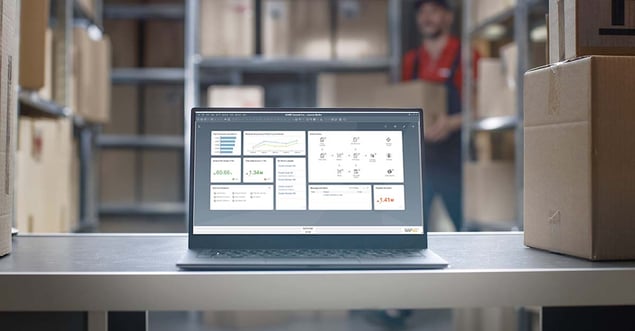In a complex economy, where customer expectations and market conditions are continually in flux, wholesale distributors are faced with many challenges. They’re looking for ways to reduce operational costs without negatively affecting customer satisfaction. This means finding an optimal product mix and keeping just the right amount of inventory on hand, without tying up excess cash resources. Managing all this effectively can be challenging, particularly in high growth businesses that are adding new sales territories, channels and product lines on a regular basis.
So, how can growing wholesale distributors thrive? By implementing an ERP solution that takes a complete view of their business. If you’re running a stand-alone inventory management system, that’s a good start. But it will only take you so far. With an ERP solution, your entire business is integrated into one system, allowing you to achieve cost reductions and profit increases that simply aren’t possible otherwise. The advantages are nearly endless, but we’ve boiled it down to the top six benefits that distributors see with an ERP system.
1. Reduce your inventory investment
In any wholesale business, inventory is by far the biggest cost. And for those companies that still track inventory manually (via a spreadsheet or otherwise), the cost can increase significantly. Every manual error, stock-out and expedited shipment adds to your inventory costs, simply because the data you’re working with isn’t accurate. An ERP solution dramatically reduces the manual effort required to help you improve your cash flow. Using out-of-the-box features, the system will set reorder points based on historical orders and identify trends to help you optimize your stock levels.
2. Optimize your inventory mix with advanced inventory planning tools
Think of the biggest challenges you currently have when it comes to inventory management. Are you missing re-order points because you’re tracking them manually? How often do you have backorders? What are you spending to expedite shipments because of those backorders? What’s your carrying cost on the stock that isn’t moving? A good ERP solution should provide standard functionality to help you handle all these issues. Instead of needing a large team to manually track stock movements, analyze trends and identify opportunities to optimize, the ERP system does the heavy lifting for you.
3. Improve order-to-cash with automated processes
Reducing your order-to-cash process can generate big returns for both you and your customer. This was one of the most important improvements Construction Fasteners & Tools saw when they implemented SAP Business One. They leveraged their ERP system to automate and streamline the entire process, resulting in happier customers and increased operational efficiency.
4. Look for strategic opportunities in your supply chain
If you want to improve lead times and secure better pricing, effectively managing relationships with your vendors is essential. Spend the time getting to know your suppliers and work together to come up with innovative strategies that are mutually beneficial. Measuring current vendor performance will help you identify and create action plans to address issues with under-performing suppliers. Having a strong ERP system makes this process much easier and more effective, with better visibility into vendor performance indicators.

5. Gain visibility into inventory levels and sales activity
Increased visibility is one of top reasons that companies implement an ERP system. When data from all areas of the business is centralized in one system, you can quickly and easily answer key questions about your performance. As a wholesale distributor, you’ll better understand how your product mix is performing across regions, sales reps or customer groups. And you’ll gain visibility into your purchasing spend, supplier performance, cost to serve and more.
6. Operate more efficiently
One of the first things SMEs notice when they move to an ERP system is efficiency. Processes that used to be highly manual and time consuming can be down in a fraction of the time – often with fewer people. You’ll see gains among your purchasing and inventory management resources, but it doesn’t end there. Leading ERP systems are configured to optimize processes across accounting and sales as well, so you’ll see increased efficiency across the entire organization.
“SAP Business One allows our team to be more efficient by having the information we need at our fingertips. Average daily time savings across 12 users is almost one hour per day.” – Sean Lavin, Aircom Instrumentation
Thinking about your own business, can you see opportunity for improvement in any of these six areas? If the answer is yes (or even maybe), we can help.
As a leading ERP partner, we've helped many other North American distributors streamline operations and fuel growth. We're here to guide you through the process – right from evaluation, through implementation and beyond.


